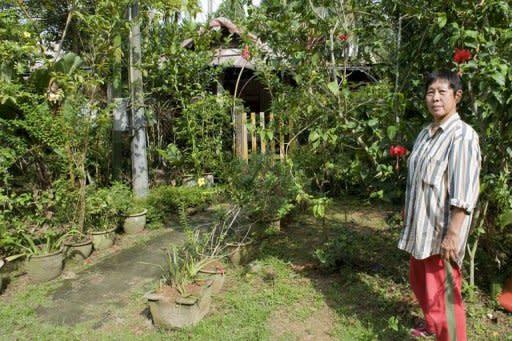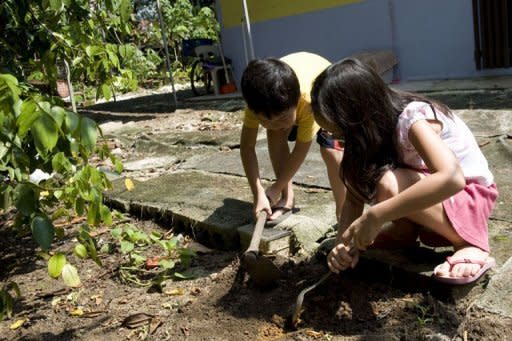Last village standing evokes Singapore's rural past
Quietly tucked away in a corner surrounded by high-rise apartments and rows of bungalows is a rustic village where the old Singapore still survives. Dogs and cats run freely and chickens cluck noisily as children play around colourful, zinc-roofed houses made of wood and cement, undisturbed by the din of cars zipping by on an expressway just a few metres away. Welcome to Kampong Lorong Buangkok, the last surviving village on the Singapore mainland. Its days are numbered but until development forces residents to move, the village gives visitors a glimpse of what life was like in the 1950s before Singapore became one of Asia's most modern and wealthiest cities. Occupying a land area the size of three football fields in the northeastern suburbs, the kampong ("village" in the Malay language) has 28 houses scattered haphazardly with a total of about 50 residents. With unpaved streets, large backyard gardens, grassy patches and occasional banana plants, the cluster is an anachronism in a city-state crammed with office towers, high-rise apartment blocks and shopping malls. For residents, the village provides relief at the end of each working day, a quiet oasis where neighbours still know each other intimately, quite unlike the anonymity of city living. "I have a deep attachment to my neighbours," said Sng Mui Hong, a 57-year-old spinster who rents out houses in the village for Sg$6.50 to Sg$30 ($5 to $23) a month. Most of Singapore's five million residents live in government-built apartment buildings and private condominiums. "After all they grew up with me, and some of the grandmothers and grandfathers here have watched me grow up," said Sng, who currently lives with a nephew and niece, three dogs and several pet birds. Her family moved into the plot of land in 1956, when Singapore was still under British colonial rule. Electricity and running water came into the village in 1962, a period when the country was in political transition. Singapore, a largely ethnic Chinese island, became part of the Malaysian Federation in 1963 but was expelled two years later as Kuala Lumpur pursued policies favourable to the Malay majority. In modern-day Kampong Lorong Buangkok, racial harmony comes naturally for the Chinese and Malay families whose houses are about five metres (16.5 feet) apart. "They are like my own parents because we are from the same village. So I don't care if they are Malay or Chinese," Sng said of her older neighbours. And while the village is by Singapore standards far from supermarkets, schools and bus and train stops, residents rarely mind as there are perks to village life that cannot be found elsewhere. Some even own cars, a luxury in Singapore. Makeup artist Jamil Kamsah, who has lived in Kampong Lorong Buangkok since 1967, enjoys the amicable nature of the village folk. "People here are very friendly, motherly and polite, and it is easy for me to make friends with them," the 55-year-old said. "I don't scold animals and I talk to plants." In his free time, Jamil tends to his garden and touches up the exterior of his house, welcoming visitors with a ready smile. In land-scarce Singapore, where many older buildings and residential areas have been converted to more modern housing or commercial use, Kampong Lorong Buangkok faces an uncertain future. Sng hopes the village can be preserved to educate future generations about the past and show them how their forefathers lived. "Not everybody started off wealthy, many grandfathers built their lives from scratch," she said Some city schools take their young students on excursion trips to Kampong Lorong Buangkok to learn about village life. "Some children mistook the chickens for birds," Kamsah recalled. The village's days are numbered, and the residents know it. Singapore's land-use planning agency, the Urban Redevelopment Authority (URA), said there are plans to redevelop Kampong Lorong Buangkok, but gave no time frame. "The kampong at Lorong Buangkok and its surrounding land is planned to be comprehensively developed to provide future housing and other neighbourhood facilities supported by a road network," said a URA spokesperson. Sng, however, does not feel sad even if her village has to go one day. "Nothing lasts forever," she shrugged.




